Russia and China join forces in the Arctic as part of ‘no limits’ pact boosting oil and LNG ties while U.S. has ‘only one functional ice breaker,’ intelligence report warns
Russia and China have stepped up cooperation in the Arctic since Russian forces invaded Ukraine, according to a new private intelligence report, which warns that the US is far behind Moscow in its efforts to develop the region.
Russia once tried to limit the role of the People’s Republic of China in the Arctic, the Strider Technologies report said.
That changed when Moscow became isolated in the aftermath of the war in Ukraine.
“Russia’s increasing willingness to allow the People’s Republic of China into the Arctic demonstrates the reality of their ‘no-limits’ partnership and its potential counterbalance to US-led alliances,” the report concludes.
The result is that the West may never catch up and could forever cede control of the Atlantic Ocean to China and Russia.
Russia has become increasingly isolated following the invasion of Ukraine, and it will soon be the only non-NATO country in the Arctic. According to a report by Strider Technologies, a private intelligence group, increasing cooperation with China will close this gap
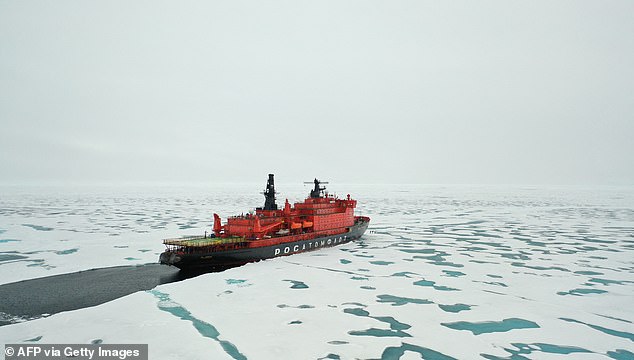
Russia’s ’50 Years of Victory’ nuclear-powered icebreaker is seen at the North Pole on August 18, 2021
The report, based on open source information, mainly shows how Moscow is increasingly dependent on Chinese companies to help develop the Northern Sea Route – the shortest route between European ports and the Far East – and energy infrastructure.
The warning comes at a time of great uncertainty and opportunity in the Arctic. Climate change opens a vast new frontier for geopolitical rivalry, unlocking a wealth of untapped natural resources and trade routes.
The report illustrates how an increasingly isolated Russia has had to find new partners to develop the region and fill the gaps left by sanctions.
In particular, once Sweden joins NATO, US allies will encircle the Arctic Circle, apart from the Russian-controlled area.
And the seven other countries that make up the Artic Council have all ended their cooperation with Moscow.
That meant Russia was forced to look to China, said Strider co-founder Eric Levesque, allowing the country to reduce its own spending in the region while funneling money into its war effort.
“This pivot underlines the diplomatic and economic isolation Moscow is experiencing in the wake of its invasion of Ukraine and its growing dependence on the People’s Republic of China for its economic development and security objectives,” he said.
“However, Russia’s adept use of cross-border partnerships and private sector involvement in Arctic development demonstrates a more effective approach than that of its Western counterparts, staying true to its historic reliance on private enterprise to support state initiatives. ‘
The investigation found that in the 18 months to June 2023, 234 PRC-owned companies had registered to operate in the Russian-controlled Arctic. That represented an increase of 87 percent compared to the two years before.
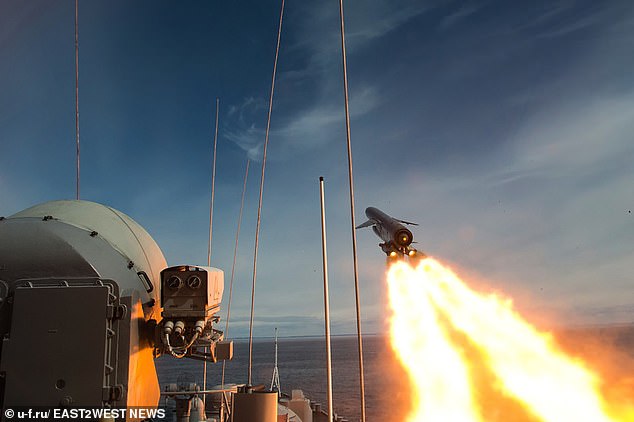
Russia’s Admiral Gorshkov frigate fires a hypersonic Tsirkon missile into the Barents Sea
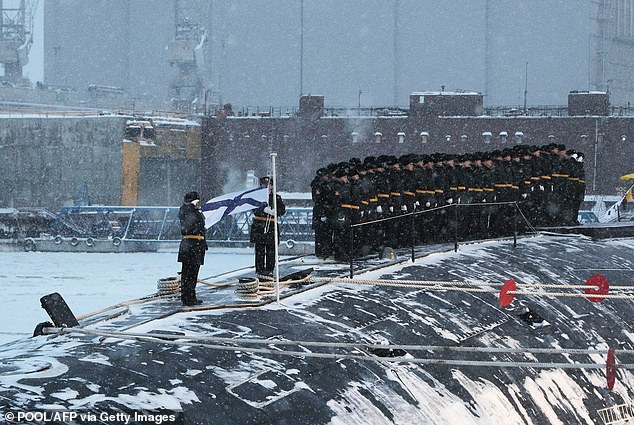
Image shows the new Russian nuclear submarine during a flag-raising ceremony led by Vladimir Putin in the Arctic port of Severodvinsk on December 11, 2023
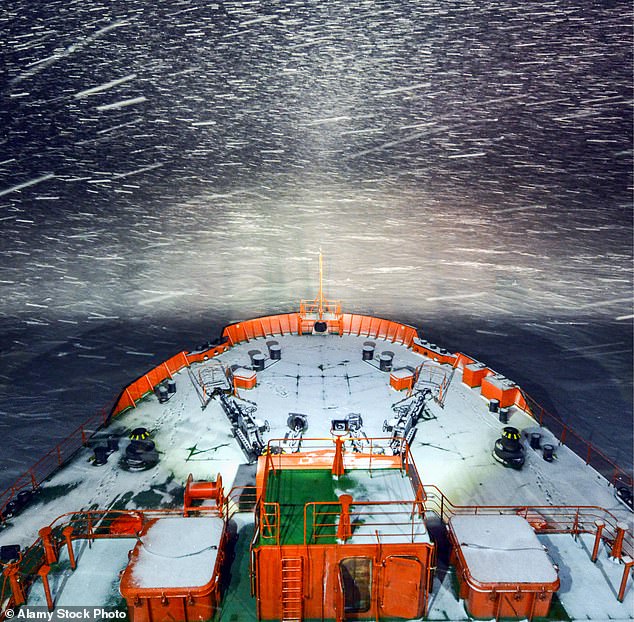
Atomflot’s 50 Let Pobedy (50th Anniversary of Victory) nuclear-powered icebreaker makes its way through the frozen waters of the Gulf of Ob, the Kara Sea
Chinese companies had also helped fill the gap left by Western companies after the invasion of Ukraine.
In particular, companies including the China National Petroleum Corporation and China National Offshore Oil Corporation have worked to keep the Arctic LNG2 project running (which will produce almost 20 million tons of liquefied natural gas per year), while others provided key technologies such as gas turbines.
Although Russian defense spending fell by 90 percent prior to the invasion, it has since been replaced by a sharp increase in the activities of private sector companies and entrepreneurs.
The use of the Northern Sea Route is also increasing. At least eleven ships carried Russian crude oil to the People’s Republic of China via this Arctic route in 2023, after only one transit in 2022.
Levesque said the US was lagging behind.
“The Arctic seems to consistently be an afterthought for the US,” he said NBC News. ‘The US has not made it a priority. Russia is probably ten years or more ahead of the US
“We have about one functional icebreaker, and it was built in the 1970s.”
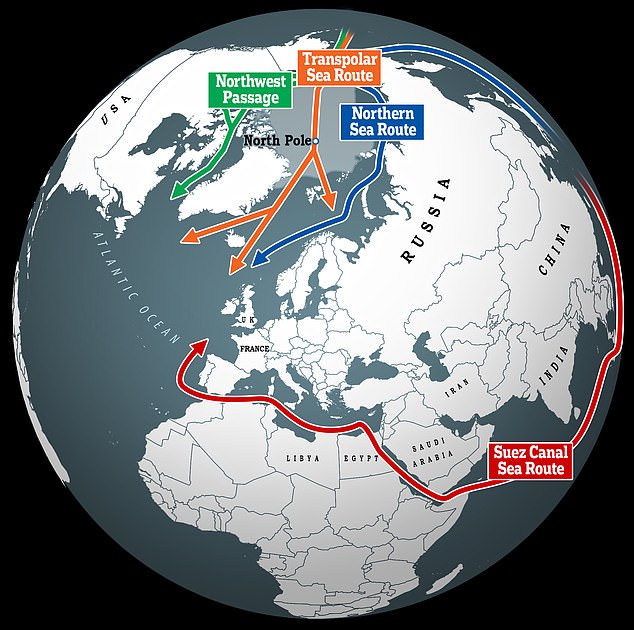
The distance from a Northwestern European port to the Far East along the Northeast Sea Route is almost 40% shorter than the traditional route via the Suez Canal. Other sea routes become more accessible for a larger part of the year
Lawmakers share these concerns about growing Sino-Russian cooperation. The issue was examined during a House Homeland Security Committee hearing last year
“We must respond to strengthen our presence, both military and civilian, to ensure that we can protect our national security interests, economic security interests, energy security interests and environmental security interests that are so critical to our national security,” said Sen. Dan Sullivan, R -Alaska.
The Strider report concludes that Western policymakers must work harder than ever to understand the region’s changing dynamics.
“These stakeholders must look beyond Russian rhetoric and identify the key players in charge of Russia’s Arctic strategy,” the report says.
‘The West is already lagging behind Russia’s Arctic development, but without this knowledge the West may never catch up and the Arctic will fall completely within the sphere of influence of Russia and the PRC.’
